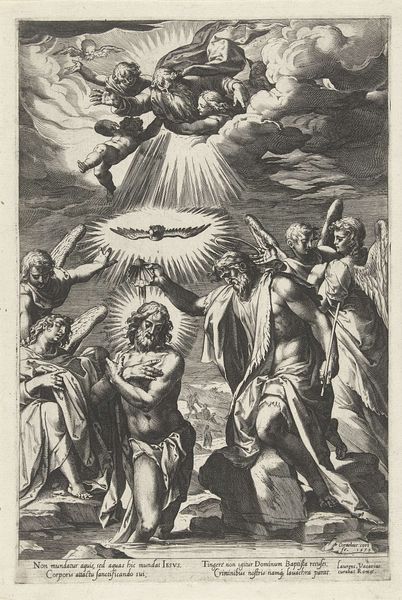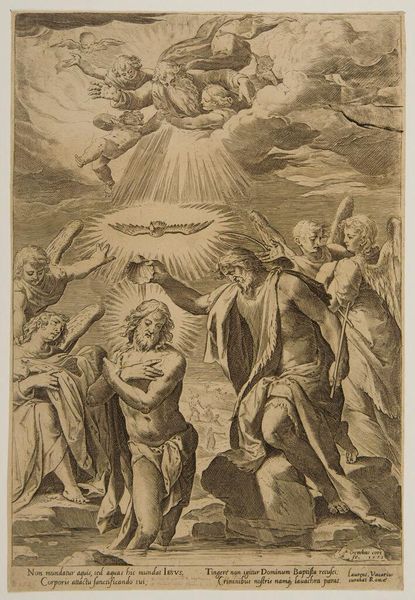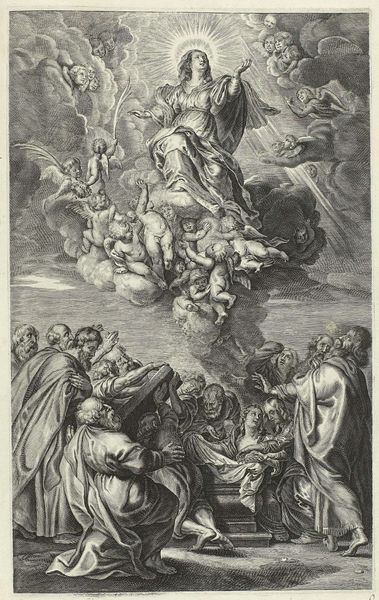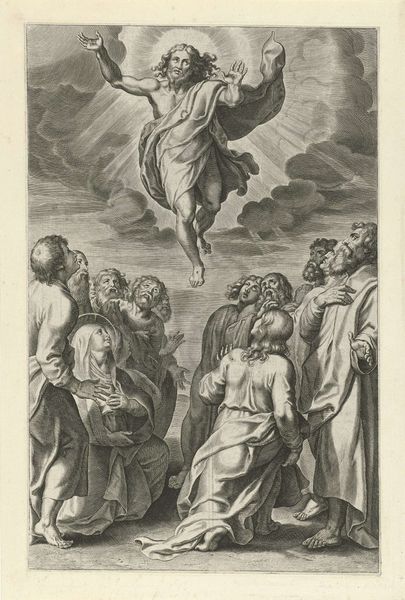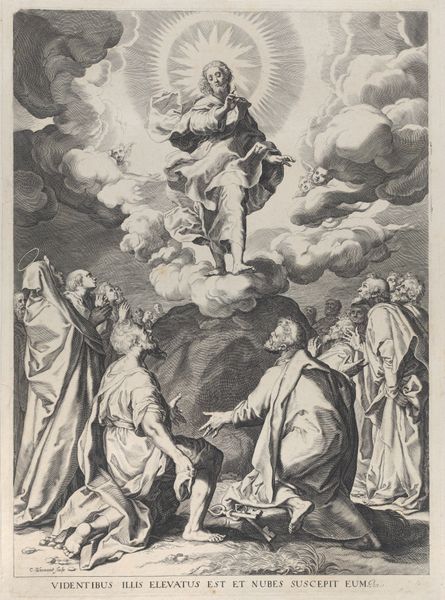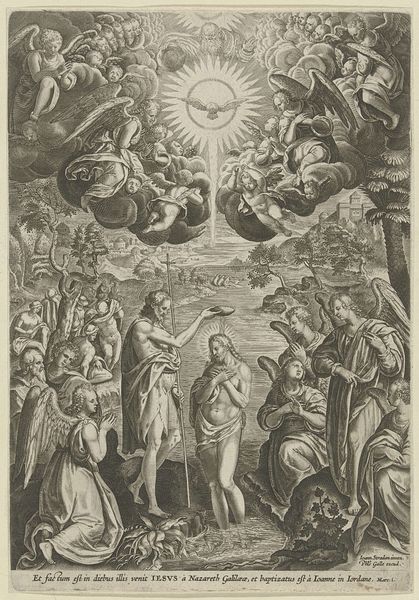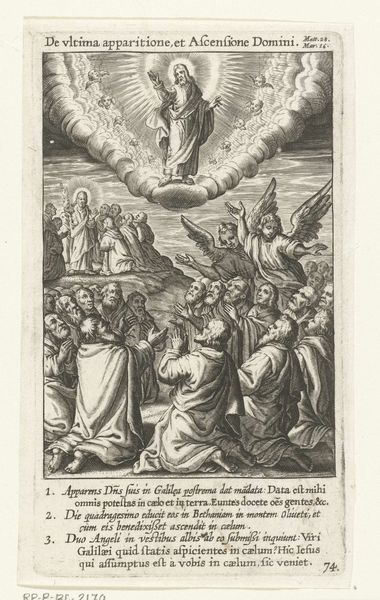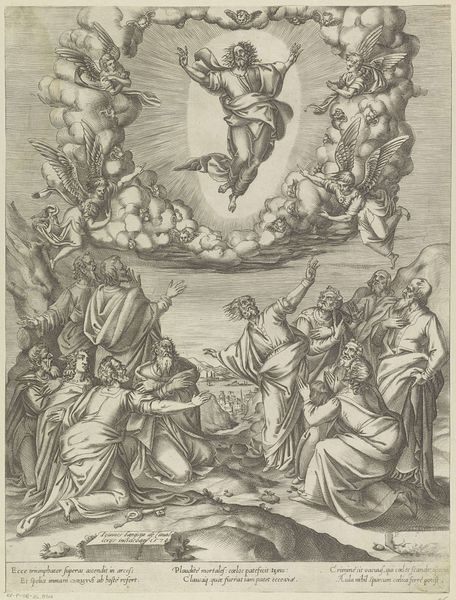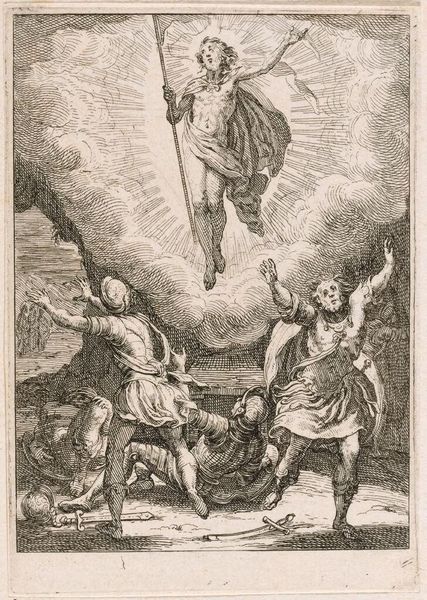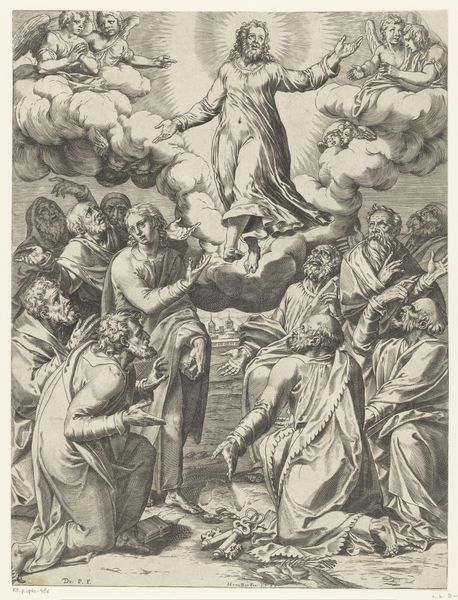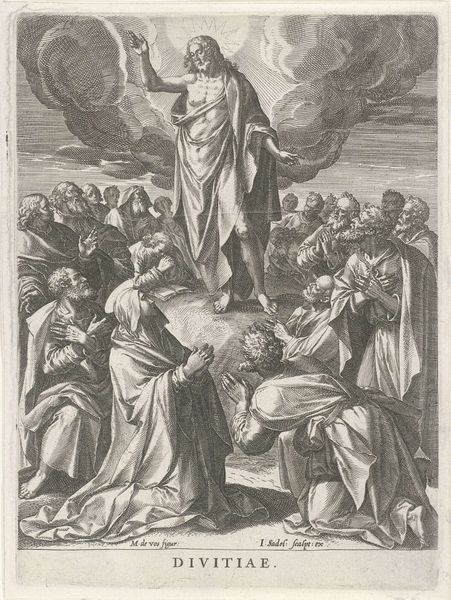
Dimensions: height 308 mm, width 204 mm
Copyright: Rijks Museum: Open Domain
Cornelis Cort made this engraving of "The Baptism of Christ in the Jordan" sometime in the 16th century, using a technique that was both reproductive and expressive. Engraving involves carving lines directly into a metal plate, traditionally copper, which then holds ink for printing. Notice the crispness of the lines, the gradations of tone achieved through hatching, and the overall sense of depth and drama. These weren't just technical feats. Engraving was a key technology in the print revolution, allowing images to be disseminated widely and cheaply. It brought art, religious narratives, and political messaging to a broad audience. Cort was part of a network of engravers who helped to spread the influence of Italian Renaissance art throughout Europe. In a very real sense, they were participating in a burgeoning media industry. So, next time you look at a print like this, remember that it's not just an image, but the product of skilled labor, technical innovation, and a desire to make art accessible. It challenges the idea of art as a unique, precious object, and invites us to think about its role in shaping culture and society.
Comments
No comments
Be the first to comment and join the conversation on the ultimate creative platform.
